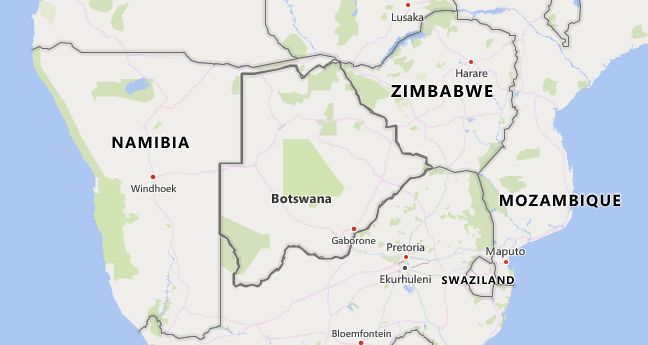There are 3 high school codes in Botswana today, according to the ACT. The full list is shown below by city, with name of each high school and the city where the school is located (based on the ACT official site). You can search a school code by pressing “Ctrl” + “F” and then type school name or 6-digit school code.
Map of Botswana
High School Codes by City
- High School Code
- 604109
- High School Code
- 604097
- High School Code
- 604100
The above lists CEEB codes (College Entrance Examination Board) for all accredited Botswana high schools. Please be informed that the list of high school codes in Botswana may change throughout the year. If you can’t find codes for the high schools of your interest, please write to us or come back at a later time. We will update our database soon after a new high school code is added to the country of Botswana.
Country Abbreviations
BWA is the three-letter country code of Botswana, and BW is the two-letter country code of Botswana. The two-letter suffix is used in top-level domains on the Internet as .bw.
Botswana, officially Republic of Botswana [r ɪ p ʌ bl ɪ k ɔ v -], German Republic Botswana, landlocked country in Southern Africa with (2019) 2.3 million residents; The capital is Gaborone.
Population
The majority of the Bantu-speaking peoples live in Botswana. The largest groups are the Tswana (80%), which are divided into eight tribes, each with strictly demarcated tribal areas, and the Shona (11%). The San people (3%), the indigenous people, were gradually pushed back into the most inhospitable parts of the Kalahari. With 4 residents / km 2, Botswana is one of the most sparsely populated countries in the world. While most of the country is almost uninhabited, the majority of the population lives in the south and east of the country, in a strip near the border with the Republic of South Africa and Zimbabwe. There are the two largest cities Gaborone and Francistown. The proportion of the urban population is 58%.
The biggest cities in Botswana
| Largest cities (population 2011 census) | |
| Gaborone | 231 600 |
| Francistown | 99,000 |
| Molepolole | 66 500 |
| Maun | 60 300 |
| Mogoditshane | 58 100 |
The standard of living has improved considerably in the last few decades, but not all parts of the population have an equal share in the growing prosperity. There are significant income differences between the rural and urban populations. But there is also a wide gap between rich and poor in the cities due to the high level of immigration. One of the biggest problems continues to be the immune deficiency disease AIDS. Despite the first successes of the state health programs, the infection rate among adults (age group 15 to 49 years) is 22.2%.
Religion
The constitution (Articles 11 and 12) guarantees freedom of religion. All religious communities have equal legal status and are required to register with the Ministry of the Interior. If you follow different surveys that provide different figures, then between 63 and 79% of the population describe themselves as Christians, although their membership profile appears very heterogeneous. The vast majority of the remainder is assigned either to indigenous African beliefs (around 4–6%) or no religion (15– almost 30%), depending on the survey. More than 20% of the Christians belong to independent African churches, around 12% to Protestant communities (especially Lutherans, Reformed, Pentecostal and Adventists) and around 5–6% of the Catholic Church (Diocese of Gaborone [Suffragan diocese of Bloemfontein, Republic of South Africa]; Apostolic Vicariate Francistown [Suffragan of the Archdiocese of Pretoria, Republic of South Africa]). The remaining Christians are members of smaller groups. The Baha’is, Muslims, Hindus and Jews are numerically negligible religious minorities (especially in the larger cities).
Environment
The thornveld, a dry association with grasses, sparse patches of low trees (acacias, euphorbias) and thorny bushes, constitutes the typical vegetation cover of the Botswana territory, almost everywhere desert. The shrubby steppe of the Kalahari gives way to the grassy and arborated savannah of the northeastern areas, whose flora consists largely of acacias, eucalyptus and Rhodesian teak. The only region of the country to have a rich vegetation cover is, in addition to the banks of the Limpopo, the valley of the Okavango River, in the northwestern part, due to the presence of extensive marshy areas. Here also lives a very varied fauna (lions, leopards, hippos, rhinos, giraffes, elephants, gazelles, antelopes, ostriches), today protected in the four national parks of the country, of which the most important is the Chobe National Park, and in the protected areas, which occupy 37.2% of the national territory. Also worth mentioning is the Kgalagadi transfrontier park, born from the merger of another South African park. Some animal species are threatened with extinction due to the rapid expansion of livestock farming, which also contributes to the impoverishment of the land, causing the increase of desert areas.

